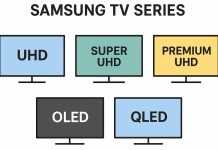A Human Interface Device (HID) is a class of devices that act as controls. HID technology, designed to standardize connectivity and eliminate the need for additional software, allows users to easily connect peripherals such as keyboards, mice and game controllers to their systems (laptops, computers and so on).
The Evolution of HID Devices
Originally developed for USB interfaces, the HID standard has since been extended to other protocols, including Bluetooth and ZigBee. Prior to HID, connecting peripherals often required the installation of proprietary drivers. For example, early computer mice or keyboards required the installation of special software that came with the device. Today, thanks to HID technology, modern operating systems automatically recognize and configure supported devices, simplifying the process for users. For example, you can simply connect a computer mouse to your TV and control it, in the same way you can connect a mouse to your phone or tablet.
Common HID Devices
The HID class includes a variety of input devices designed to enhance user interaction, such as:
- Keyboards
- Mice
- Game controllers
- Remote controls
- Touchscreens
These devices are now ubiquitous and most modern systems support HID profiles. Even if the device has a specific purpose, such as gaming mice and keyboards, it may require a driver to operate, as they may have non-standard control buttons, but they usually support basic commands and can be operated by default as normal devices.
HID Beyond USB
While HID was initially limited to USB connections, its versatility has led to its adoption across other communication protocols:
- Bluetooth HID: Enables wireless connectivity for keyboards and mice.
- Serial HID: Commonly used in remote controls for devices like Microsoft Windows Media Center PCs.
- ZigBee Input Devices: Supports HID profiles through the ZigBee RF4CE standard.
- HID Over GATT (HOGP): Facilitates Bluetooth Low Energy (BLE) connections for power-efficient HID devices.
The Impact of HID on Consumer Electronics
The introduction of HID has revolutionized device interoperability. Previously, manufacturers often restricted peripherals to proprietary systems. For instance, early Samsung TVs supported only Samsung-branded keyboards, which were sold at a premium. In contrast, competitors offering broader HID compatibility gained an edge, prompting Samsung to adopt a more inclusive approach.
Today, HID continues to simplify device integration, ensuring that users can connect a wide range of peripherals without hassle. Whether it’s a Bluetooth mouse for a laptop or a ZigBee-enabled remote for a smart home system, HID technology has become an indispensable part of modern electronics.






